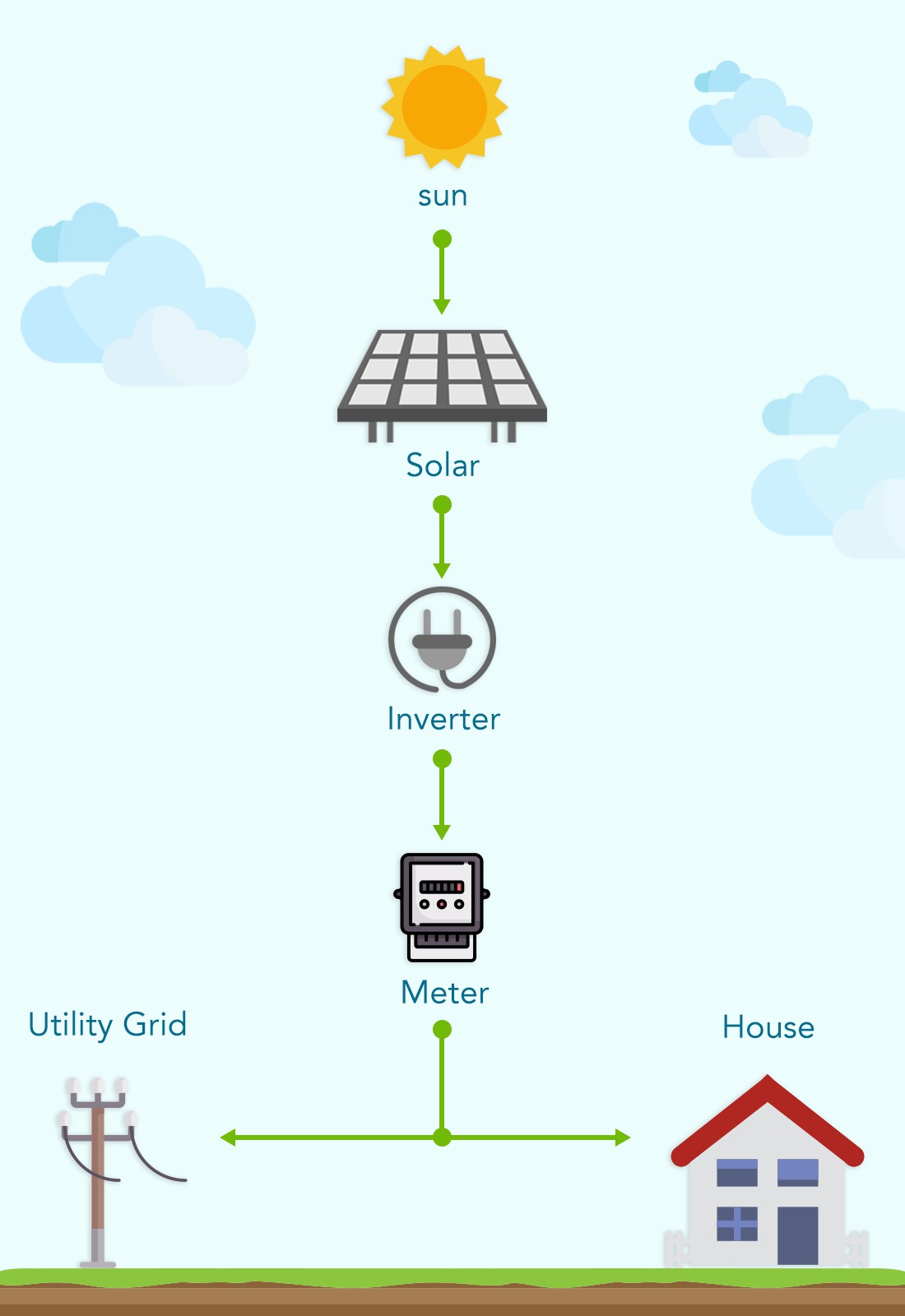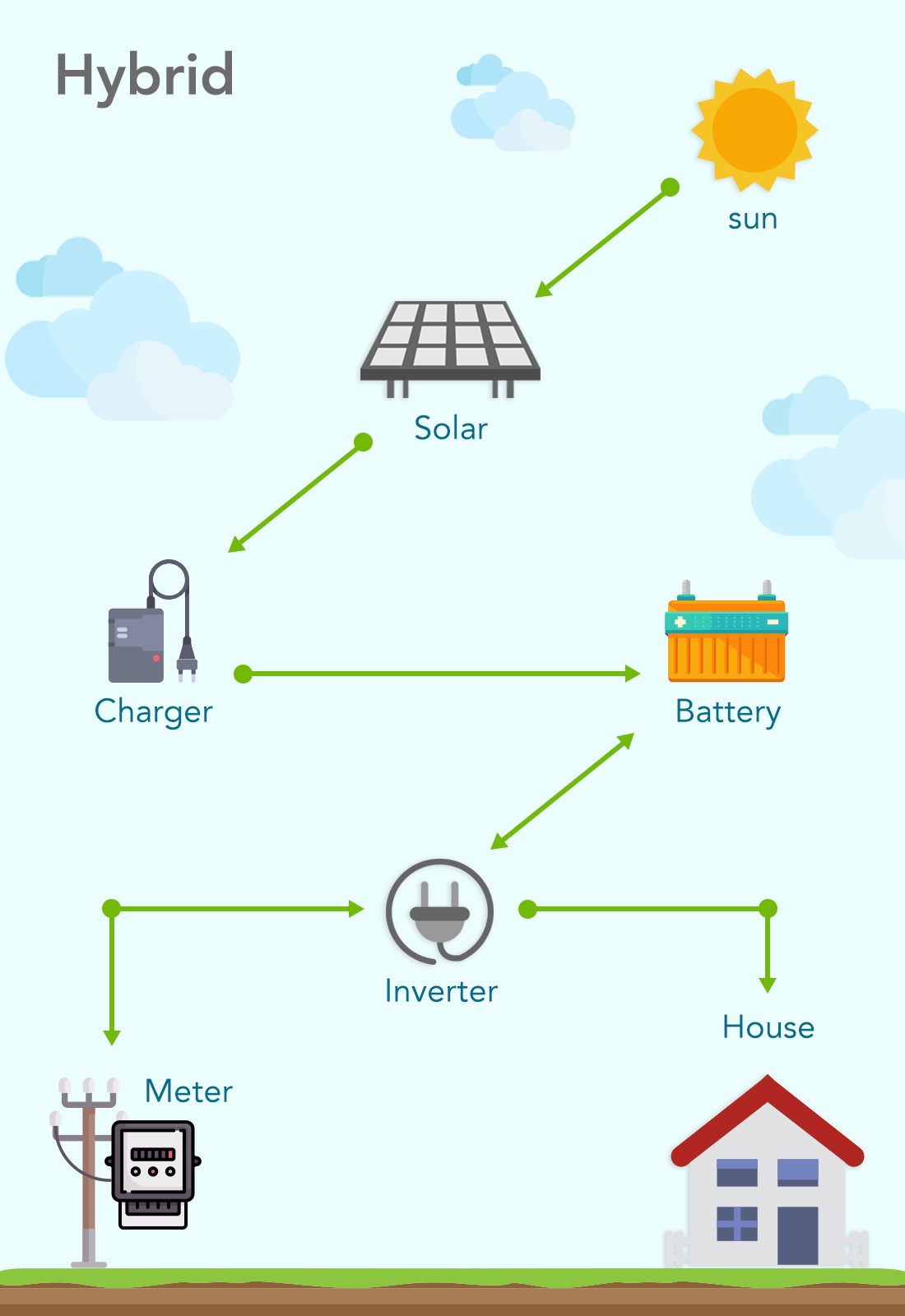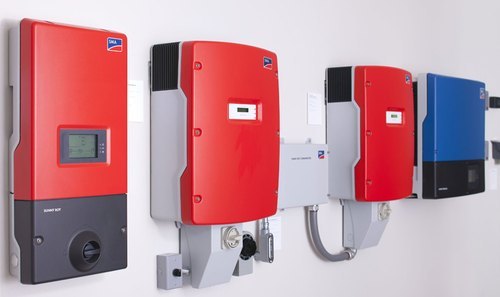Turnkey Solutions
Types of Solar Power Solutions
1. Grid-Tied (in-sync with local electrical grid, like K-Electric, and without battery backup)- most suitable for:
• Where intended usage is during daylight hours, such as in offices, schools, colleges etc.
• To benefit from net-metering where available
• For customers who are looking to reduce their carbon footprint
2. Off-Grid (independent of local electrical grid with battery backup) most suitable for:
• For areas facing long hours of load shedding or frequent power failures
• For areas where electricity distribution network in unreliable (fluctuation, etc.)
3. Hybrid, i.e., grid-tied with battery backup most suitable:
Solar Panels
Also called Photovoltaic (PV) Modules, are made of solar cells. A solar cell is THE electricity generating component of a solar power system.
There are various types, sizes and qualitiies of solar panels available depending on type and quality of solar cells used. Three most common types of solar cells are:
• Amorphous Silicon
• Mono-crystalline
• Poly-crystalline
Based on climatic conditions, poly-crystalline solar panels are well suited for use in Karachi. When compared with the other types of PV modules of same efficiency, poly-crystalline modules are the least expensive. Typical service life of a good quality solar panel is usually more than 25 years. Get Advanced Solar Energy Products in Pakistan Today.
Solar Invertors and Charge Controllers
A solar inverter serves as the BRAIN of a solar power system. It manages and regulates the outflows and inflows of electricity to and from other components like solar panels, batteries, electrical appliances and electrical grid.
The electricity generated by solar panels is called Direct Current (DC) while the electricity provided by electrical grid (like K-Electric) is called Alternating Current (AC). AC is needed to provide power to most electrical and electronics equipment. An inverter converts the DC from solar panels (or batteries) into AC that can be used to power all our appliances and equipment. Get Advanced Solar Energy Products in Pakistan.
In case of Grid-Tied systems, inverter is resposible for synchronizing the solar power with the electrical grid and also to supply the surplus energy to the grid, if required.
In case of Off-Grid and Hybrid systems, where batteries are required, a solar inverter also provides the funtionality of a charge controller. Charge controller, as the name suggests, controls and monitors the charging process, charge levels and health of batteries.
Typical service life of good quality solar inverter is usually 10 years.
Solar Batteries
A battery serves as the ENERGY STORAGE or ENERGY BUFFER in off-grid and hybrid solar power systems.
Also refered to as Battery Bank, typically multiple batteries are required in a solar power system. Battery bank stores the energy produced by solar panels during daytime and provides this stored energy during night time to the appliances, if required.
Solar batteries must be rechargeable so as to be able to store and provide electric charge many times during opeation. In a typical solar power application, a battery is regularly charged to 100% capacity and then discharged up to 80% of its capacity and then recharged to full capacity again. This process is refered to as Deep-Cycle charging-discharging and hence the name Deep-Cycle Batteries.
Deep-cycle batteries come in many different types, sizes and qualities. Some of the most commonly available batteries are:
• Lead-Acid Batteries – by far the most commonly used type and also the least expensive. These are also the most robust type. There are two main variants available:
◦ Dry – also called maintenance-free. Electrolyte is sealed in the battery housing therefore no need for refilling nor any danger of spillage. Common types are AGM and Gel.
• Lithium – high efficiency, high energy density and long-life. Available as LiFePO4 (lithium iron phosphate) type for renewable enery applications. These are gradually becomming popular in solar power applications, but high price and high sensitiviy to working conditions as well as danger of expolsion mean limited application scenarios. Nevertheless, a good companion for off-grid and hybrid solar power systems.
• Nickel – one of the oldest types of rechargeable batteries. Available as nickel cadmium and nicke metal hydride types. These have higher efficiency and higher energy density then lead-acid batteries, but are more expensive and more sensitive to operating conditions. These are now gradually phasing out. Buy Solar Products in Pakistan.
PV Mounts & Battery Racks
Solar panels are usually installed on roofs of buildings or on ground in large open areas. These need to be mounted on strong and stable metal structure that could support the weight of all the panels as well as withstand strong winds and harsh weather.
There are different types of prefabricated as well as fully customized PV mounts available. Most commonly used metals for mounts are mild steel (MS), galvanized iron (GI), stainless steel (SS) and aluminum. Battery racks are usually made with MS.
PV Switchgear & Distribution Boxes
Switchgear, like circuit-breakers, fuses, disconnects, changeovers, surge-protectors, etc., are the most essential and critical safety component in any electrical installation. Good quality of these components ensures long life and highest efficiency of the overall system.
A typical solar power installation requires switchgear on both DC as well AC side of the system. A combiner/distribution box (DB) houses the required switchgear. All connections to and from inverter/controller go thourgh the DB.













